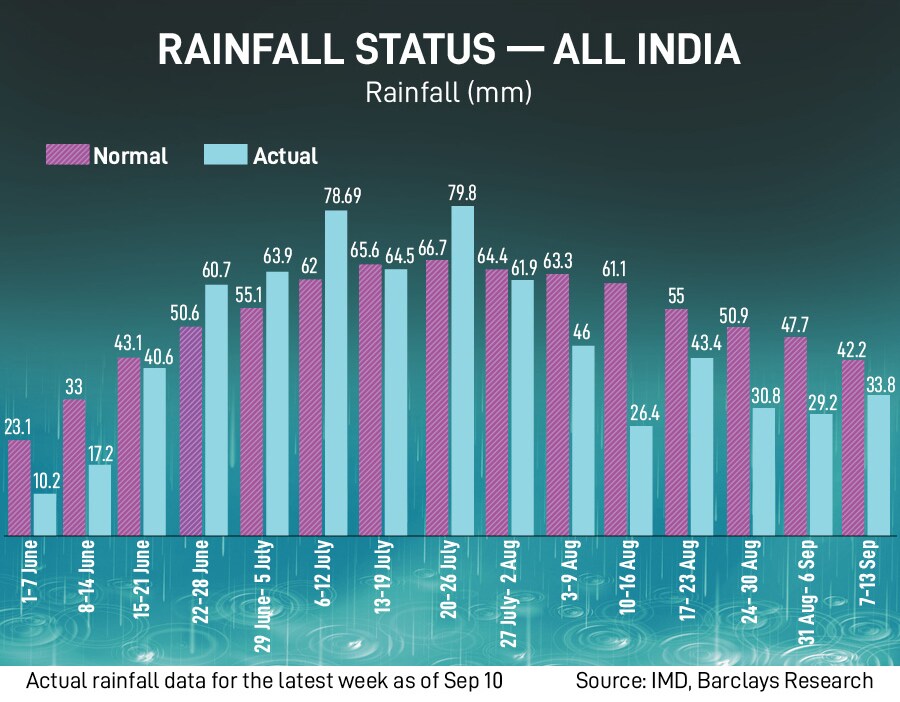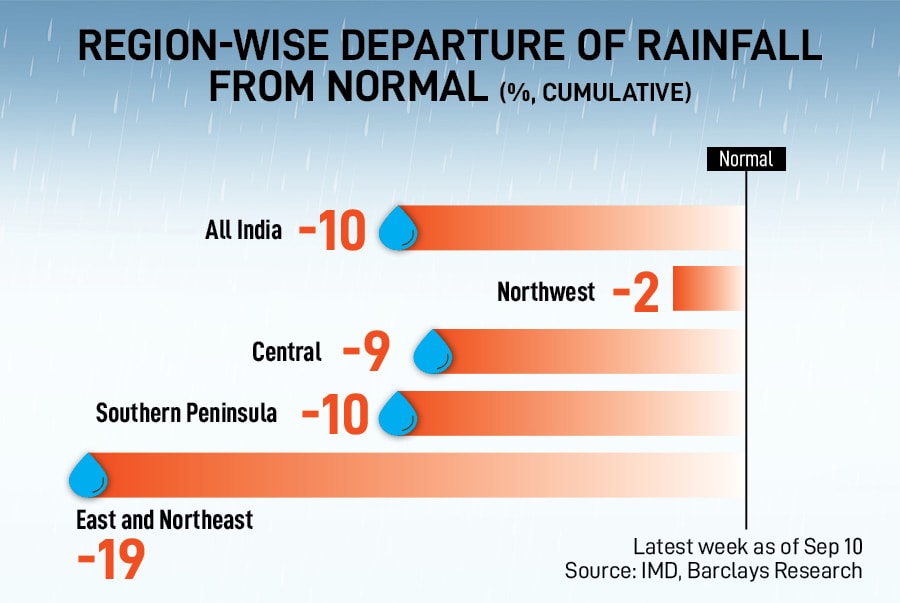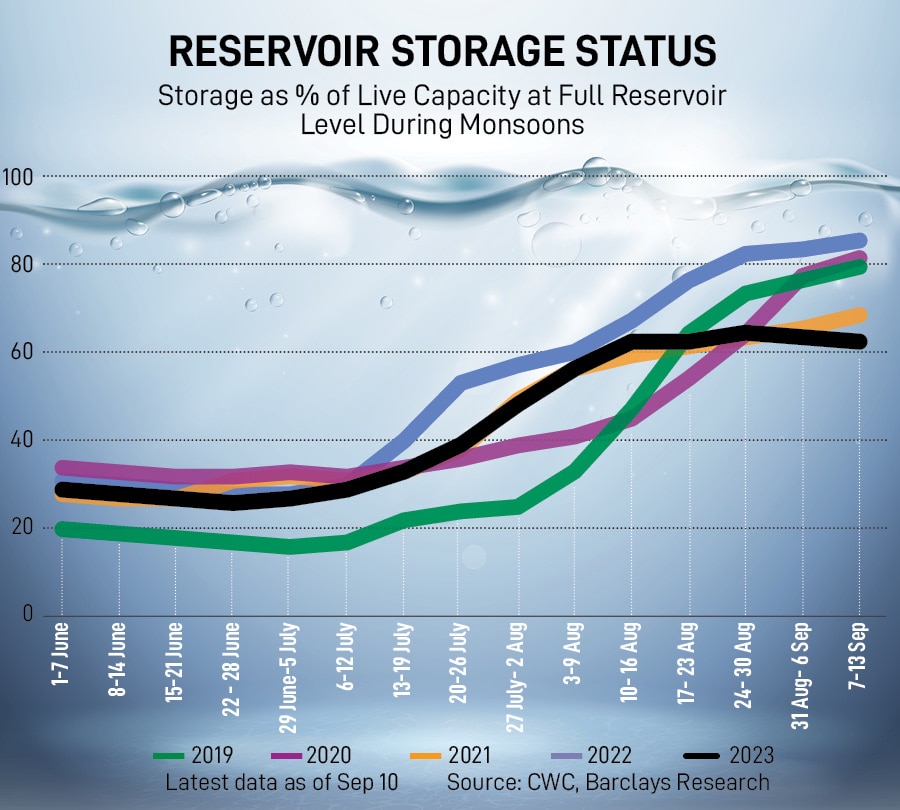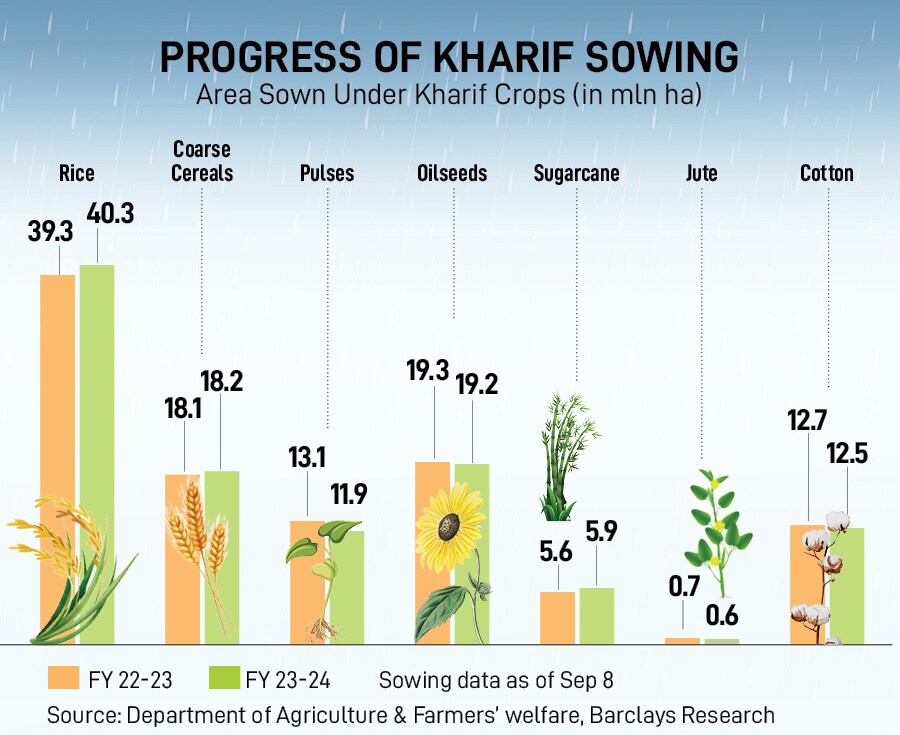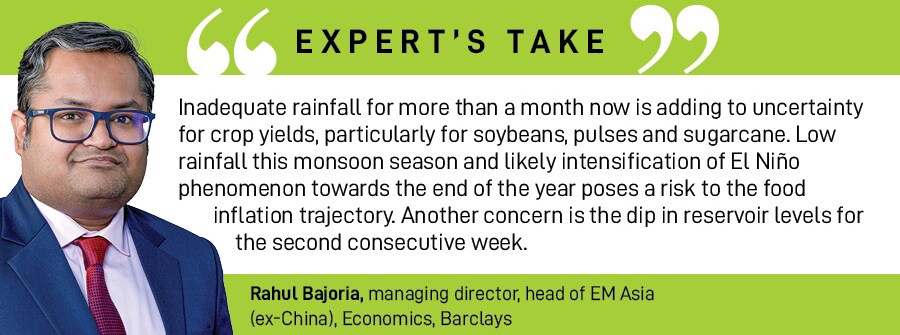
Rain watch for Sept 7-13: Monsoon weak, crop yields uncertainty rises
Reservoir levels declined again with storage at 62 percent. Though kharif sowing is complete, lack of adequate rainfall for over a month may lead to uncertainty for crop yields, including sugarcane owing to deficient rainfall in major producer states like Maharashtra
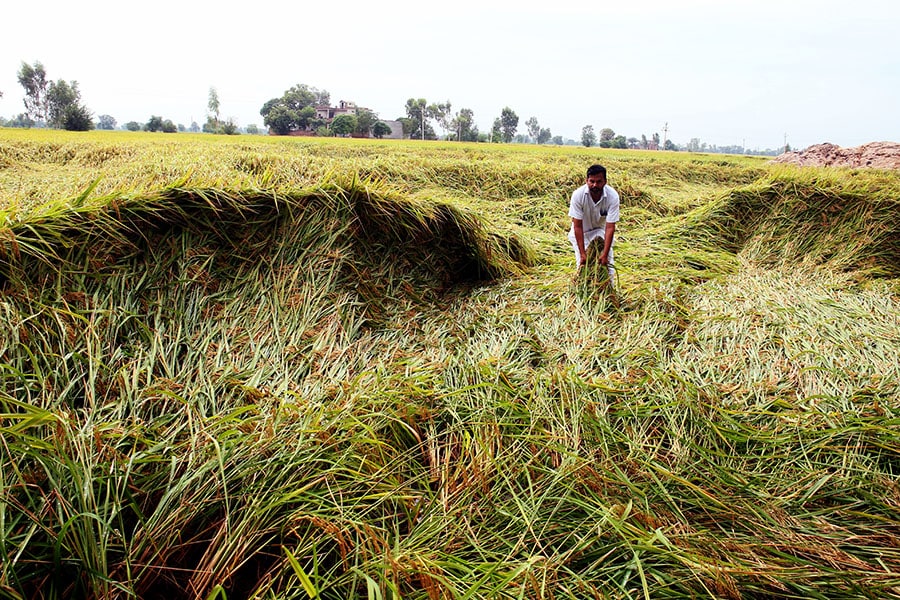 Monsoon continued to remain weak in the second week of September as dry spells continued with rains below normal. Image: Sanjeev Kumar/Hindustan Times via Getty Images
Monsoon continued to remain weak in the second week of September as dry spells continued with rains below normal. Image: Sanjeev Kumar/Hindustan Times via Getty Images
Monsoon continued to remain weak in the second week of September as dry spells continued with rains below normal, leading to an increase in the pan-India rainfall deficit. Weakness in monsoon rainfall extended into September, with cumulative rainfall deficit (from June 1- September 10) at pan-India level at 10 percent long period average (LPA), shows an analysis by Barclays based on India Meteorological Department (IMD) data.
Over the past week, rainfall in the northwest, central and eastern regions was largely deficient; however, the southern peninsula region received excess rainfall, particularly in the state of Telangana. All four major regions are now facing deficit rainfall.
